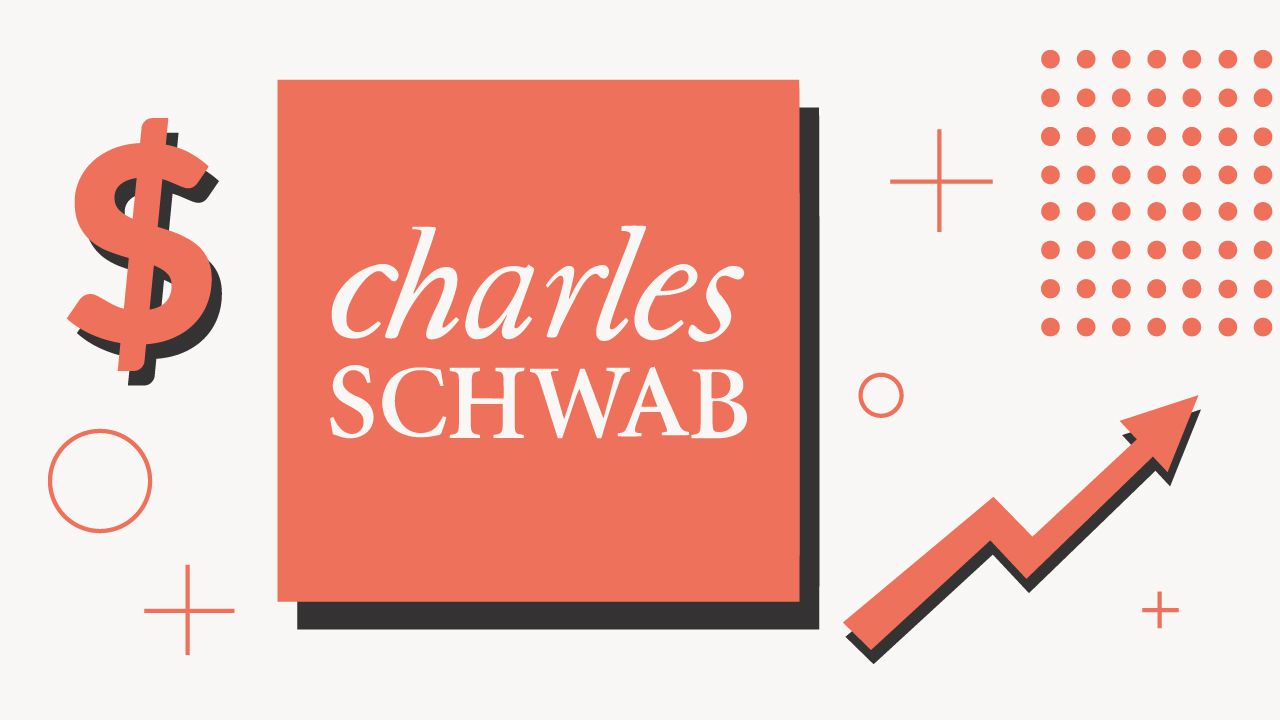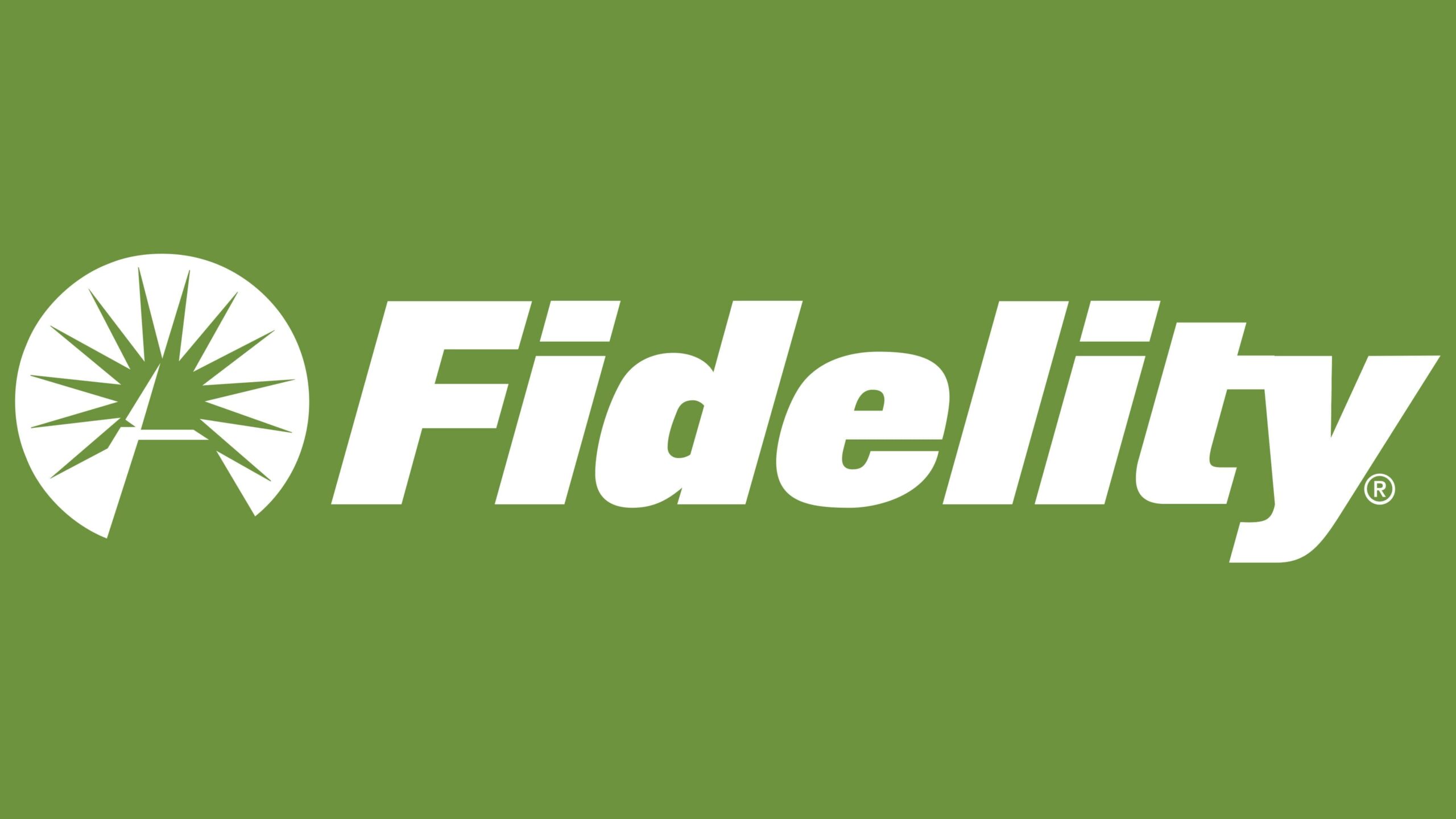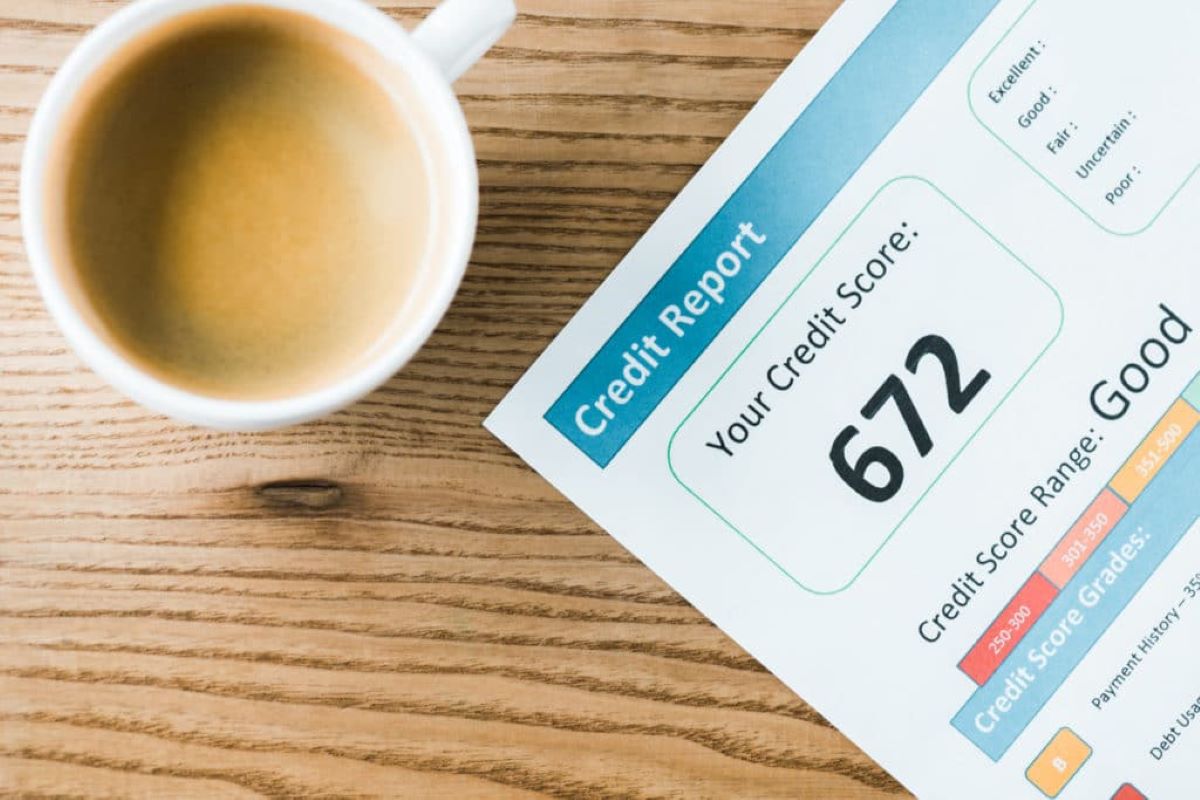

Finance
Where To Buy Savings Bonds
Modified: December 30, 2023
Looking to invest in finance? Find out where to buy savings bonds and grow your money with secure and stable returns. Start your financial journey today.
(Many of the links in this article redirect to a specific reviewed product. Your purchase of these products through affiliate links helps to generate commission for LiveWell, at no extra cost. Learn more)
Table of Contents
- Introduction
- What are savings bonds?
- Benefits of investing in savings bonds
- Types of savings bonds available
- Where to buy savings bonds
- Financial institutions
- TreasuryDirect
- Online brokerages
- Banks and credit unions
- How to purchase savings bonds online
- Online registration
- Funding your account
- Placing an order for savings bonds
- Conclusion
Introduction
When it comes to saving and investing, there are countless options available to individuals. One popular choice, especially for those looking for a low-risk investment, is savings bonds. Savings bonds are government-backed securities that offer a safe and reliable way to grow your money over time.
In this article, we will explore the world of savings bonds, the benefits of investing in them, the various types available, and most importantly, where you can buy them. Whether you are a newcomer to the world of finance or a seasoned investor, understanding savings bonds and knowing where to purchase them can play a key role in your financial planning strategy.
While savings bonds may not offer the high return potential of riskier investments such as stocks or real estate, they have their own unique advantages. First and foremost, savings bonds are considered to be one of the safest investment options available. They are backed by the full faith and credit of the government, which means that you can trust that your money is secure. This makes savings bonds an attractive option for those who want to protect their capital and minimize the risk of losing money.
Another benefit of investing in savings bonds is their simplicity. Unlike other investment vehicles that may require extensive research and monitoring, savings bonds are straightforward and easy to understand. You don’t need to be a financial expert to start investing in savings bonds, making them accessible to a wide range of individuals.
Furthermore, savings bonds offer a fixed interest rate, which can provide stability and certainty in an ever-changing financial market. While the rates may vary based on the type of bond and prevailing market conditions, you can typically count on earning a predictable return on your investment.
What are savings bonds?
Savings bonds are a type of debt security issued by the government to raise funds. They are considered low-risk investments as they are backed by the credit and taxing power of the government. When you purchase a savings bond, you are essentially lending money to the government, which it promises to repay with interest over a specific period of time.
Savings bonds are typically issued in nominal values, with common denominations ranging from $25 to $10,000. They have fixed interest rates that are generally lower than other investment options, such as stocks or mutual funds. However, this lower interest rate is offset by the safety and stability that savings bonds offer.
One distinguishing feature of savings bonds is that they have a predetermined maturity date. This means that you cannot redeem the bonds before they reach maturity, which can range from several months to several decades, depending on the type of bond. Upon maturity, you will receive the full face value of the bond, including any accrued interest.
There are two main types of savings bonds available:
- Series EE Bonds: These are the most common type of savings bonds and are considered a useful tool for long-term savings. The interest on Series EE Bonds is generally compounded semi-annually and accrues over a period of 30 years. However, they can be cashed in as early as one year after purchase, although you may incur a penalty if redeemed before five years.
- Series I Bonds: These bonds protect against inflation by tracking changes in the consumer price index (CPI). They offer a combined fixed interest rate and a variable rate that is adjusted every six months based on inflation rates. Series I Bonds have a 30-year term and can be redeemed after one year, although redeeming before five years will result in the forfeiture of three months’ worth of interest.
Savings bonds can be an excellent addition to your investment portfolio, especially if you prioritize capital preservation and long-term stability. They are particularly well-suited for individuals who are risk-averse or looking for a safe and reliable savings option. Now that you understand what savings bonds are, let’s explore some of the benefits of investing in them.
Benefits of investing in savings bonds
Investing in savings bonds offers several advantages that make them a compelling option for individuals seeking a low-risk investment strategy. Here are some of the key benefits:
1. Safety and security: Savings bonds are backed by the full faith and credit of the government, which means that they are considered to be one of the safest investments available. Unlike stocks or other financial instruments that are subject to market fluctuations, savings bonds provide a guaranteed return on investment. This makes them an excellent choice for conservative investors who prioritize capital preservation.
2. Fixed interest rates: Savings bonds offer a fixed interest rate that remains the same for the duration of the bond’s maturity period. This provides investors with predictability and stability, as they know exactly how much return they will earn over time. This can be particularly beneficial in times of economic uncertainty when other investments may experience higher volatility.
3. Tax advantages: One of the advantages of investing in savings bonds is the potential for tax benefits. Interest earned on savings bonds is exempt from state and local taxes, and it can also be tax-free at the federal level if used for qualified education expenses. This allows investors to keep more of their earnings, resulting in higher overall returns.
4. Accessibility: Purchasing savings bonds is relatively easy and accessible to a wide range of individuals. They can be bought directly from financial institutions, online through TreasuryDirect, or even through employer-sponsored retirement plans. This convenience makes it simple for anyone to start investing in savings bonds and benefit from their advantages.
5. Diversification: Savings bonds offer a way to diversify your investment portfolio. By adding this low-risk asset class to your overall investment strategy, you can balance out more aggressive or volatile investments and reduce the overall risk of your portfolio. Diversification is an essential principle of successful investing, and savings bonds can play a valuable role in achieving that.
6. Flexibility: Savings bonds provide flexibility in terms of investment amounts and redemption options. You can start investing in savings bonds with as little as $25, making them accessible to investors with varying budgets. Additionally, you have the option to redeem savings bonds at any time after the initial holding period, which provides liquidity if needed.
7. Financial education: Investing in savings bonds can be an opportunity to learn about the principles of investing, compound interest, and the role of government debt. It can serve as a valuable educational tool, especially for young investors or those looking to develop a better understanding of the financial markets.
Overall, the benefits of investing in savings bonds make them an attractive option for individuals seeking a low-risk investment vehicle. Whether you are looking for safety, stability, tax advantages, or portfolio diversification, savings bonds can be a valuable addition to your overall investment strategy.
Types of savings bonds available
Savings bonds come in different types, each with its own features and benefits. Understanding the various options can help you choose the type of savings bond that best aligns with your financial goals. Here are the two main types of savings bonds available:
-
Series EE Bonds:
Series EE Bonds are one of the most common types of savings bonds. They are designed as a long-term savings tool and can be held for up to 30 years, although they can be cashed in as early as one year after purchase. These bonds earn interest that is compounded semi-annually and have a guaranteed minimum interest rate. The interest is added to the bond’s value, allowing it to grow over time. Series EE Bonds can be purchased at face value, meaning you pay the full amount of the bond, or through a payroll savings plan where a portion of your paycheck is automatically used to purchase bonds.
One noteworthy aspect of Series EE Bonds is the potential for them to earn interest beyond their original maturity date. If you hold the bond beyond the initial 30-year period, it will continue to accrue interest for a total of 40 years. This extended interest-earning period can provide additional growth to your investment.
-
Series I Bonds:
Series I Bonds are designed to protect against inflation while offering a stable return. These bonds have a fixed interest rate, which is determined at the time of purchase. In addition to the fixed rate, Series I Bonds also have a variable rate that is adjusted every six months based on changes in the Consumer Price Index for Urban Consumers (CPI-U). The combined interest rate of the bond is calculated by adding the fixed rate and the inflation rate.
Series I Bonds have a longer initial holding period than Series EE Bonds, requiring a minimum of one year before they can be redeemed. However, if you redeem a Series I Bond within the first five years, you will forfeit the most recent three months’ worth of interest. After the initial holding period, you can redeem the bond at any time without penalty.
One notable feature of Series I Bonds is the potential for them to earn a higher return during periods of inflation. As the inflation rate increases, the variable interest rate of the bond adjusts accordingly, providing protection against the erosion of purchasing power.
It is important to note that both Series EE Bonds and Series I Bonds are not subject to state and local income taxes. Additionally, they can be exempt from federal income tax if used for qualified educational expenses.
Understanding the differences between these two types of savings bonds can help you make an informed decision based on factors such as investment duration, interest rate structure, and inflation protection. By selecting the right type of savings bond for your financial goals, you can take advantage of their unique benefits and potentially grow your savings over time.
Where to buy savings bonds
When it comes to purchasing savings bonds, there are several options available to investors. Whether you prefer the traditional brick-and-mortar approach or the convenience of online platforms, here are some of the main avenues to consider:
-
Financial institutions:
One common way to buy savings bonds is through various financial institutions such as banks, credit unions, and brokerage firms. These institutions often offer savings bonds as part of their investment product offerings. You can visit a local branch and speak with a representative who can guide you through the process of purchasing bonds. They can help you understand the different types of savings bonds available and assist you in selecting the right ones for your investment needs.
-
TreasuryDirect:
TreasuryDirect is the official online platform of the U.S. Department of the Treasury for buying and managing savings bonds. It offers a user-friendly interface where you can open an account and complete the entire bond purchasing process online. TreasuryDirect allows you to buy, manage, and redeem savings bonds electronically. One of the benefits of using TreasuryDirect is that you can easily track the performance of your savings bonds and access important account information at any time.
-
Online brokerages:
Many online brokerage firms also offer the option to purchase savings bonds. These platforms provide a convenient way to invest in savings bonds alongside other investment products. They offer a range of educational resources and tools to assist you in making informed investment decisions. Online brokerages may also provide access to discounted or no-fee transaction fees when buying savings bonds, making them a cost-effective option.
When deciding where to buy savings bonds, it is important to consider factors such as your comfort level with digital platforms, access to customer support, and any associated fees. Each option has its own advantages, so it’s essential to choose the one that aligns with your preferences and investment goals.
It’s worth noting that as of January 1, 2012, savings bonds are no longer available for purchase through over-the-counter channels, such as payroll deduction programs or financial institutions. However, if you have existing physical bonds, you can still redeem them at financial institutions or through TreasuryDirect.
Now that you are familiar with where to buy savings bonds, let’s explore how to purchase them online. This process will vary slightly depending on the platform you choose, but the general steps remain relatively consistent.
Financial institutions
One popular option for purchasing savings bonds is through various financial institutions, including banks, credit unions, and brokerage firms. These institutions often offer a range of investment products, including savings bonds, to cater to the diverse needs of investors. Here’s how you can buy savings bonds through financial institutions:
1. Research and choose a financial institution: Start by researching different financial institutions in your area or those that offer online services. Look for institutions that provide savings bonds as part of their investment offerings. Consider factors such as reputation, customer service, and any associated fees.
2. Visit the institution: If you prefer a physical interaction, visit a local branch of the chosen financial institution. Schedule an appointment, if necessary, to speak with a representative who can guide you through the savings bond purchase process. They can explain the different types of savings bonds available, answer your questions, and assist you in selecting the right ones for your investment needs.
3. Provide necessary documentation: When you visit the financial institution, be prepared to provide identification documents, such as a government-issued ID, Social Security number, and proof of address. These documents may be required for compliance and verification purposes before you can proceed with the purchase of savings bonds.
4. Complete the purchase: Once you have selected the type of savings bond you wish to buy, the financial institution representative will assist you in completing the purchase. They will provide you with the necessary forms and instructions to initiate the transaction. You may need to specify the amount and denomination of the bonds you want to purchase.
5. Payment and issuance: Most financial institutions require payment at the time of purchase, which will be debited from your account or accepted in the form of a certified check or cash. The institution will process your request and issue the savings bonds either in physical form or as electronic certificates, depending on their procedures. It’s important to keep your bonds in a safe place as they represent your investment and can be redeemed upon maturity.
Buying savings bonds through financial institutions offers the advantage of receiving personalized guidance and support throughout the process. The representatives can address any questions or concerns you may have, making it suitable for those who prefer a more hands-on approach or value face-to-face interactions. However, it’s essential to compare fees and rates across different institutions to ensure you are getting the best value for your investment.
While financial institutions provide a convenient avenue for purchasing savings bonds, it’s worth considering other options such as TreasuryDirect and online brokerages. These alternatives offer the flexibility of conducting the entire bond purchase process online, allowing you to manage your investments at your convenience. Let’s explore these options further in the next sections.
TreasuryDirect
TreasuryDirect is the official online platform of the U.S. Department of the Treasury for buying and managing savings bonds. It offers a convenient and secure way to purchase savings bonds directly from the government. Here’s how you can buy savings bonds through TreasuryDirect:
1. Create an account: To use TreasuryDirect, you will need to create an account on their website. The registration process requires providing personal information, such as your Social Security number, email address, and bank account details for funding your purchases. Ensure that you have all the required documents and information handy before starting the registration process.
2. Fund your account: Once your account is set up, you need to fund it before you can make purchases. TreasuryDirect offers several funding options, including electronic funds transfer (ACH), wire transfer, or using your tax refund. Choose the method that is most convenient for you and follow the instructions provided on the platform.
3. Explore available savings bonds: After your account is funded, you can start exploring the available savings bonds on TreasuryDirect. They offer both Series EE Bonds and Series I Bonds, allowing you to choose the type that best suits your investment goals. You can review the bond details, including interest rates, maturity dates, and any specific terms or conditions.
4. Place your order: Once you have selected the savings bond you want to purchase, enter the desired amount and denominations. TreasuryDirect allows you to specify the amount you want to invest, starting from as low as $25. Follow the instructions provided on the platform to complete your order.
5. Review and confirm: Before finalizing the purchase, carefully review the order details and ensure all the information is correct. Double-check the investment amount, bond type, and any fees or transaction charges that may apply. Once you are satisfied, confirm the order to proceed with the purchase.
6. Track and manage your savings bonds: After the purchase is complete, you can log in to your TreasuryDirect account to track and manage your savings bonds. The platform provides access to account statements, transaction history, and the ability to redeem bonds or gift them to others. You can also set up automatic reinvestment options to reinvest the proceeds of matured bonds into new bonds.
TreasuryDirect offers the convenience of purchasing savings bonds from the comfort of your own home or wherever you have internet access. It eliminates the need for physical paperwork and allows for efficient management of your investments. Additionally, using TreasuryDirect ensures that your savings bonds are directly held and managed by the U.S. Department of the Treasury, providing added security and peace of mind.
While TreasuryDirect is a popular option for buying savings bonds, it’s important to compare the features and fees with other platforms to ensure you choose the one that best fits your needs and preferences.
Online brokerages
Online brokerages provide another avenue for purchasing savings bonds conveniently and efficiently. These platforms offer a range of investment products, including savings bonds, and provide investors with accessibility, convenience, and additional tools for managing their investments. Here’s how you can buy savings bonds through online brokerages:
1. Choose a reputable online brokerage: Start by researching and selecting a reputable online brokerage that offers savings bonds as part of their product offerings. Look for brokerages with a user-friendly interface, competitive fees, and a strong track record of customer satisfaction. Consider factors such as account security, customer support, and educational resources.
2. Open an account: Once you have chosen an online brokerage, you will need to open an account with them. This typically involves providing personal information, such as your name, address, Social Security number, and financial information. The brokerage may also require you to complete a risk assessment questionnaire to determine your investment goals and risk tolerance.
3. Fund your account: After your account is set up, you will need to fund it before you can start purchasing savings bonds. Most online brokerages offer various funding options, such as linking your bank account, wire transfers, or electronic funds transfers. Choose the method that is most convenient for you and follow the instructions provided by the brokerage.
4. Research and choose savings bonds: Once your account is funded, you can start researching and selecting the savings bonds you wish to purchase. Online brokerages typically provide a comprehensive platform where you can access information about different savings bond options, including their interest rates, maturities, and other relevant details. Take your time to evaluate the available bonds and choose the ones that align with your investment objectives.
5. Place your order: Once you have decided on the savings bonds you want to purchase, enter the desired investment amount and any additional information required by the brokerage. Review the order details to ensure accuracy and confirm the transaction to proceed with the purchase.
6. Track and manage your savings bonds: After the purchase is complete, you can use the online brokerage platform to track and manage your savings bonds. This includes accessing account statements, monitoring the performance of your investments, and keeping track of any upcoming maturity dates. Online brokerages often provide additional tools and resources to assist you in managing your investment portfolio effectively.
Using online brokerages offers several advantages, including easy access to a wide range of investment options, competitive pricing, and user-friendly platforms. These brokerages often provide research tools and educational materials to help you make informed investment decisions. Additionally, online brokerages may offer discounted or no-fee transactions for savings bond purchases, making them a cost-effective way to invest.
Keep in mind that online brokerages may have specific requirements, fees, and minimum investment amounts for purchasing savings bonds. It’s important to review and compare the features and fees across different brokerages to ensure you choose the one that best fits your investment needs and preferences.
Banks and credit unions
Another option for purchasing savings bonds is through banks and credit unions. These financial institutions are well-established and widely accessible, making it convenient for individuals to buy savings bonds as part of their banking services. Here’s how you can buy savings bonds through banks and credit unions:
1. Research and choose a bank or credit union: Start by researching and selecting a bank or credit union that offers savings bonds. Look for institutions that have a strong reputation, convenient branch locations, and a range of banking services. It’s a good idea to consider factors such as the institution’s fees, customer service, and any specific requirements for purchasing savings bonds.
2. Visit a branch or contact the institution: Once you have chosen a bank or credit union, you can visit a branch in person or contact them through their customer service channels. Inquire about their savings bond offerings and any specific requirements or documentation needed to proceed with the purchase.
3. Provide necessary documentation: When purchasing savings bonds through a bank or credit union, you will likely need to provide identification documents such as a government-issued ID, Social Security number, and proof of address. These documents are usually required for compliance and verification purposes.
4. Discuss and select the savings bond: Engage with a representative at the bank or credit union who will guide you through the process of selecting the right savings bond for your investment needs. They can provide information on the available bond options, their interest rates, and any other relevant details to help you make an informed decision.
5. Complete the purchase: Once you have chosen the savings bond you want to buy, the bank or credit union representative will assist you in completing the purchase. They will provide you with the necessary forms to fill out and any instructions regarding payment and issuance.
6. Payment and issuance: Most banks and credit unions require payment at the time of purchase. You can typically pay using funds from your bank account, cash, or certified checks. The institution will process your request and issue the savings bonds either in physical form or as electronic certificates, depending on their procedures.
Purchasing savings bonds through banks and credit unions offers the advantage of convenience, as these institutions are often easily accessible for individuals. It allows for personalized support and guidance from banking professionals who can answer your questions and assist you throughout the process.
It’s important to note that while banks and credit unions offer savings bonds for purchase, their availability may vary. Some institutions may offer a limited selection of savings bond options, so it’s advisable to inquire about the specific types of bonds they offer.
Comparing fees and rates across different banks and credit unions is also crucial to ensure you are getting the best value for your investment. By selecting a trusted institution that meets your needs, you can confidently purchase savings bonds and enjoy the benefits of this low-risk investment option.
How to purchase savings bonds online
Purchasing savings bonds online offers a convenient and streamlined process, allowing you to invest from the comfort of your own home. Whether through official government platforms or online brokerages, here are the general steps to purchase savings bonds online:
1. Choose a reputable online platform: Start by selecting a trusted online platform to purchase savings bonds. Options include TreasuryDirect, the official website of the U.S. Department of the Treasury, or online brokerages that offer savings bonds as part of their investment offerings. Research and compare the features, fees, and user experience before making a selection.
2. Register an account: If you opt for TreasuryDirect, you will need to create an account on their website. This involves providing personal information and setting up login credentials. For online brokerages, you will need to complete the account opening process, which typically includes verifying your identity and providing financial information.
3. Fund your account: After your account is set up, you will need to fund it. This can typically be done through various means, including linking your bank account, wire transfers, or electronic funds transfers. Make sure to follow the specific instructions provided by the chosen platform to successfully fund your account.
4. Explore and select savings bonds: Once your account is funded, you can start browsing the available savings bonds. The online platform will provide detailed information about each bond, including interest rates, maturity dates, and any special features. Take your time to review the options and select the savings bond that aligns with your investment goals.
5. Place an order: Enter the desired investment amount and any additional information required by the online platform. Review the order details, including the bond type and quantity, before submitting the order. Make sure to double-check all the information to avoid any errors.
6. Confirm and complete the purchase: After reviewing the order details, confirm the purchase to complete the transaction. The online platform will provide confirmation of the purchase, which may include an order confirmation number or reference. Keep this information for your records.
7. Track and manage your savings bonds: Once the purchase is complete, you can use the online platform to track and manage your savings bonds. This includes accessing statements, monitoring earnings, and keeping track of maturity dates. The platform may also provide features for reinvesting matured bonds or selling bonds if needed.
It’s important to follow the specific instructions provided by the chosen online platform, as the process may vary slightly between platforms. Ensure that you are using a secure and reputable online platform to safeguard your personal and financial information.
Purchasing savings bonds online offers the benefits of convenience, accessibility, and often lower transaction fees. It eliminates the need for physical paperwork and allows for easy tracking and management of your investments. By following the steps outlined above, you can confidently navigate the process of purchasing savings bonds online.
Online registration
Before you can start purchasing savings bonds online, you will need to complete the registration process on the chosen online platform. The registration process typically involves creating an account and providing necessary information. Here are the general steps for online registration:
1. Choose the online platform: Select a reputable online platform that offers savings bonds. This can be TreasuryDirect, the official website of the U.S. Department of the Treasury, or an online brokerage that provides savings bonds as part of their investment offerings. Ensure that the platform is secure and trustworthy.
2. Visit the registration page: Go to the registration page of the selected platform. Look for a “Sign Up” or “Create Account” button or a similar prompt that will direct you to the registration process.
3. Provide personal information: Fill out the registration form with the required personal information. This may include your full name, date of birth, Social Security number (or equivalent), contact information, and email address. The online platform may also ask for proof of identity and address, so be prepared to provide documentation like a government-issued ID or utility bill.
4. Set login credentials: Choose a username and password for your account. Ensure that your password is secure and not easily guessable to protect your account information. Some platforms may also offer additional security measures, such as two-factor authentication.
5. Agree to terms and conditions: Read and accept the platform’s terms and conditions, as well as any associated privacy policies. This ensures that you understand the terms of using the platform and how your personal information will be handled.
6. Verify your account: Some online platforms may require you to verify your account to ensure the provided information is accurate. This can be done through email verification or other methods specified by the platform. Follow the instructions provided to complete the verification process.
7. Review account settings: Once your account is created and verified, take a few minutes to review your account settings. This may include updating your contact information, setting up preferences or notifications, and reviewing any security settings available.
By completing the online registration process, you will have an account on the chosen platform that allows you to purchase and manage savings bonds. It’s important to safeguard your login credentials and keep your account information secure.
Keep in mind that the registration process may vary slightly depending on the online platform. Make sure to follow the specific instructions provided by the platform during the registration process. If you encounter any difficulties, the online platform’s customer support should be able to assist you.
With a registered account, you are now ready to fund your account and start investing in savings bonds online.
Funding your account
Once you have completed the online registration process and have an account on the chosen platform, the next step is to fund your account. Funding your account allows you to have the necessary funds available for purchasing savings bonds. Here’s how you can fund your account:
1. Link your bank account: Most online platforms offer the option to link your bank account directly to your investment account. This allows for seamless transfers between your bank and the online platform. To link your bank account, you will typically need to provide your bank account number and routing number. Some platforms may require an initial verification process to confirm ownership of the linked bank account.
2. Set up electronic funds transfer: Another option for funding your account is through electronic funds transfer (EFT). This involves initiating a transfer from your bank account to your investment account, typically by providing the required information and instructions through your online platform.
3. Fund via wire transfer: Some online platforms may offer the option to fund your account through wire transfer. This method allows for quick and secure transfer of funds between financial institutions. Wire transfer usually requires specific instructions provided by the platform, such as bank details and transaction reference numbers.
4. Deposit a certified check or money order: In certain cases, you may be able to fund your account by depositing a certified check or money order. The platform will provide instructions on where to send the payment and any necessary information to include. It is important to follow the instructions carefully to ensure proper and timely processing of the deposit.
5. Consider other funding options: Depending on the online platform you choose, there may be additional funding options available, such as using your tax refund or transferring funds from another investment account. Review the platform’s funding options and choose the method that is most convenient and suitable for your needs.
When funding your account, it’s important to consider any associated fees or processing times. Some platforms may charge transaction fees or have minimum deposit requirements, so be sure to review the fee structure before initiating the funding process.
By funding your account, you will have the necessary funds available to make purchases of savings bonds. It’s important to note that the funds in your account can typically be used for other investment purposes as well, providing flexibility in managing your overall investment portfolio.
Follow the specific instructions provided by the online platform to ensure a smooth and successful funding process. If you encounter any difficulties or have questions, reach out to the platform’s customer support for assistance.
Once your account is funded, you can proceed with placing an order for savings bonds and start investing online.
Placing an order for savings bonds
Once your account is funded on the chosen online platform, you are ready to place an order for savings bonds. Placing an order involves selecting the type of bond, specifying the desired investment amount, and confirming the transaction. Here’s how you can place an order for savings bonds:
1. Choose the type of savings bond: Select the type of savings bond you want to purchase based on your investment goals and preferences. The online platform will provide information about the available bond options, including Series EE Bonds and Series I Bonds. Consider factors such as interest rates, maturities, and any specific features or benefits each bond type offers.
2. Enter the investment amount: Determine the amount you want to invest in savings bonds. Some platforms may have minimum investment requirements, so ensure that your desired investment amount meets the platform’s criteria. Enter the investment amount into the designated field provided by the online platform.
3. Review the order details: Before submitting the order, review the details to ensure accuracy. Double-check the bond type, investment amount, and any associated fees or transaction charges. Take a moment to confirm that all information is correct to avoid any potential errors in the order.
4. Confirm the order: Once you have reviewed the order details, confirm the purchase to proceed with the transaction. This may involve clicking a “Confirm” or “Place Order” button, or following other instructions provided by the online platform. By confirming the order, you are authorizing the platform to initiate the transaction and complete the purchase of savings bonds on your behalf.
5. Receive confirmation and order details: After confirming the order, the online platform will provide a confirmation of the transaction. This confirmation may include an order reference number or other identifying information. Keep this confirmation for your records as proof of your purchase.
6. Keep track of your savings bonds: Once your order is confirmed and processed, the savings bonds will be credited to your account. You can use the online platform to track and manage your savings bonds, including viewing statements, monitoring earnings, and keeping track of any upcoming maturity dates. Some platforms also offer features for reinvesting matured bonds or selling bonds if needed.
It’s important to note that the specific steps and procedures for placing an order may vary slightly between online platforms. Carefully follow the instructions provided by the platform to ensure a successful purchase of savings bonds.
By placing an order for savings bonds, you are taking a step towards building your investment portfolio and working towards your financial goals. Monitoring your savings bonds over time and staying informed about interest rates and market conditions can help you make informed decisions for your investment strategy. Remember to regularly review your savings bonds to ensure they align with your changing needs and financial plans.
Conclusion
Investing in savings bonds provides a safe and reliable way to grow your money over time. Whether you choose the traditional route of financial institutions or the convenience of online platforms like TreasuryDirect and online brokerages, there are various options available to purchase savings bonds. Understanding the benefits of investing in savings bonds, such as their safety, fixed interest rates, and potential tax advantages, can help you make informed decisions when selecting the type of bond that aligns with your financial goals.
Financial institutions, including banks and credit unions, offer personalized guidance and assistance throughout the savings bond purchase process. This can be a suitable option for individuals who prefer face-to-face interactions or value the convenience of visiting a local branch. On the other hand, online platforms like TreasuryDirect provide a user-friendly interface for direct access to savings bonds issued by the government. Online brokerages offer the flexibility of purchasing savings bonds alongside other investment products, often at competitive transaction fees.
Whether you choose to buy savings bonds through financial institutions or online platforms, the process typically involves creating an account, funding your account, selecting the savings bond type, and confirming your order. Afterward, you can track and manage your savings bonds through the online platform, accessing statements, monitoring earnings, and setting reinvestment or redemption preferences.
By investing in savings bonds, you have the opportunity to benefit from their safety, stability, and potential tax advantages. Savings bonds can serve as an important component within your investment portfolio by providing diversification and serving as a reliable long-term savings tool.
Before making any investment decisions, it’s essential to thoroughly educate yourself about savings bonds and consider factors such as your risk tolerance, investment goals, and financial situation. Consulting with a financial advisor can also provide valuable insights and guidance tailored to your specific needs.
In conclusion, exploring the different avenues for purchasing savings bonds and understanding the process involved empowers you to make informed investment choices. Consider your preferences, financial goals, and risk tolerance when deciding where and how to buy savings bonds. By incorporating savings bonds into your investment strategy, you are taking steps toward a more secure and diversified financial future.














